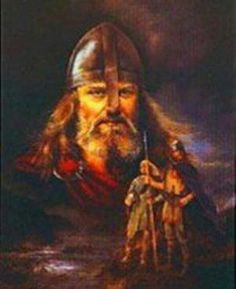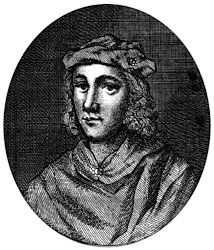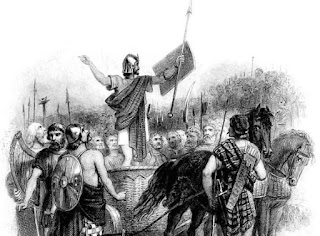King James IV
James IV., 1488-1513
The first thing to be done after the affair of Sauchieburn was to find out what had become of the King, and, when his death was made sure of, an inquiry was set on foot as to the cause of it. The offices of state were transferred to the party in power, and an act of amnesty was passed, to take in all persons who had taken part with the late King in the struggle which the nobles pleased to call the late rebellion. Two ineffectual risings to avenge the murder of the King were made by the Lords Lennox and Forbes, and three years later, to pacify the clamours of the people, a reward of one hundred marks was offered for the discovery of the actual murderers.
Just at this time Henry the Seventh of England had his hands too busy at home to allow of his making open war upon Scotland, but he carried [Pg 80]on secret schemes with Angus, Ramsay, and others for the capture of the King. James, on the other hand, upheld that Perkin Warbeck was really Richard, Duke of York, received him at his court as the son of King Edward, and gave him in marriage his kinswoman Lady Katharine Gordon. A force of French and Burgundians came to aid him, and an army crossed the Border, but it did nothing, as the rising which had been planned, and was to have been made at the same time in the north of England, did not take place. At last James got tired of Perkin, sent him off to Ireland, though with a princely escort, and renewed a truce with Henry, in 1497. The two kings were drawn still closer by the marriage of James with Margaret Tudor, eldest daughter of Henry, in 1502.
James paid frequent visits to Kintyre, the Isles, and Inverness, and took measures for the building of more castles and the maintenance of garrisons in those already built. This plan might have been successful in keeping the country quiet, if the Crown had been strong enough to carry it out. As it was not, James was forced to fall back on the old policy of turning the feuds of the chiefs to their own destruction, by empowering one to act against another. Again, the Gordons got a great increase of power, for their head, the Earl of Huntly, was appointed sheriff of Inverness, Ross, and Caithness, with the condition that he should finish and maintain a fortress at Inverness. In the west the charge of keeping order was put into the hands of the Earl of Argyle, the chief of the Campbells. An attempt was also made to break up the Isles into sheriffdoms, and to impose upon the Highlanders the laws of the Lowlands. A commission was issued for the banishment of broken men, as those clansmen were called who had no representative chiefs, and an Act was passed which made the chiefs responsible for the execution of legal writs upon their clansmen. But the disaffected chiefs rallied round Donald Dhu, an illegitimate descendant of the last Lord of the Isles, and it took three years' fighting on the part of the King and of Huntly to reduce them. Donald was at last brought captive to Edinburgh, and the lordship of the Isles was finally broken up in 1504.
In this reign Scotland first appears as a naval power, and this proved a new source of strife with England. One of the King of Scots' captains, Andrew Barton, bore letters of marque against the Portuguese, but the English accused him of taking English vessels also. He was attacked in time of truce by the Howards. He himself was killed in the action, and his ship, the Lion, was taken, and became the second ship in the English navy. James had also another cause of complaint against Henry the Eighth, for Henry refused to give up to his sister Margaret a legacy of jewels left to her by her father.
When England and France declared war, Scotland stood by her old ally, the bond between them was drawn closer, the right of citizenship in France was extended to the Scots, and Queen Anne of France made an appeal to the chivalrous feeling of James by choosing him as her knight and calling on him for assistance. James therefore fitted out a fleet of twenty-three vessels. Among them was a very large ship called the Great Michael, which was looked on as a masterpiece of shipbuilding. This fleet was put under the command of James Hamilton, Earl of Arran, with orders to sail for France. Instead of doing this, he stormed Carrickfergus, and what became of the ships was never clearly made out.











Comments
Post a Comment